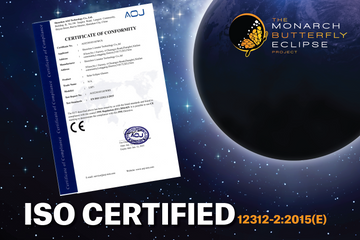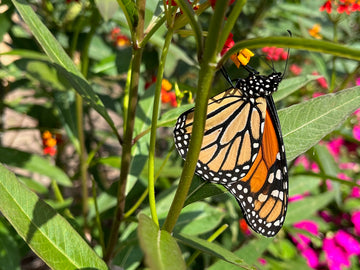The Monarch Butterfly: A Remarkable Species and Key Pollinator in Need of Conservation

The monarch butterfly, or Danaus plexippus, is a species of butterfly that is widely recognized for its distinctive orange and black wings. These beautiful creatures are found throughout North America and are known for their remarkable migration patterns, as well as their role as a keystone species in various ecosystems.
One of the most fascinating aspects of the monarch butterfly is its migration pattern. Every year, millions of monarchs fly from their summer breeding grounds in the United States and Canada to their wintering grounds in Mexico. This journey can span thousands of miles, with the butterflies navigating using a combination of sunlight and the Earth's magnetic field.
The monarch's migration is not only remarkable but also essential for the health of many ecosystems. As pollinators, monarchs play a vital role in the reproduction of many plant species. Additionally, monarch caterpillars are a key food source for many animals, including birds and small mammals. As such, the decline in the monarch population in recent years has raised concerns about the health of many ecosystems.
One of the main reasons for the decline in the monarch population is habitat loss. The monarch butterfly relies on milkweed plants for laying its eggs and as a food source for its larvae. However, the widespread use of herbicides in agriculture has resulted in the destruction of many milkweed plants. Additionally, the development of land for residential and commercial purposes has further reduced the monarch's habitat.
Fortunately, efforts are being made to protect and conserve the monarch butterfly. In 2015, the United States Fish and Wildlife Service listed the monarch as a threatened species under the Endangered Species Act. This listing has resulted in increased efforts to protect the monarch's habitat, including the planting of milkweed and other native plant species in areas where the butterfly is known to live.
Individuals can also play a role in conserving the monarch butterfly by creating monarch-friendly habitats in their own backyards. This can be done by planting milkweed and other native plant species that provide food and shelter for the butterfly.
In conclusion, the monarch butterfly is a remarkable and beautiful species that plays a critical role in many ecosystems. Its migration patterns and dependence on milkweed make it a symbol of resilience and adaptation. However, habitat loss and other threats have led to a decline in the monarch population, making conservation efforts more critical than ever. By working together to protect the monarch butterfly and its habitat, we can ensure that this magnificent species continues to thrive for generations to come.





